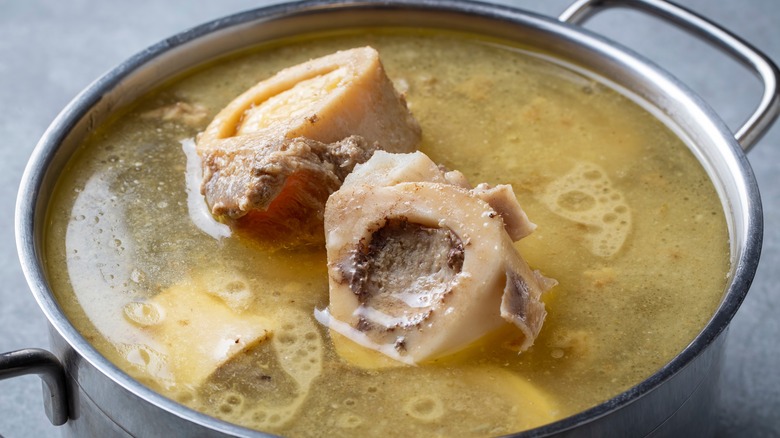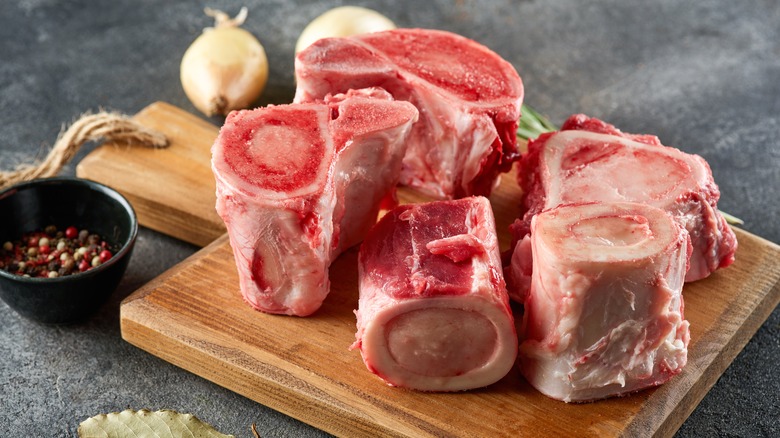The Outright Best Bones For The Richest Broth Results
More robust in flavor and texture than a typical stock, bone broth is in a class all its own. Prized as a nutrient-packed elixir believed to bestow several health benefits to consumers, the popularity of bone broth has soared in recent years. It's a wonderful thing to learn how to make, and one of the keys to a successful one is choosing the best bones for the richest possible result.
To get a rich bone broth, you need large bones — often limb and joint bones — that have either thick veins of marrow or bundles of connective collagen tissue. As the bones cook, the collagen's calcium, proteins, fats, and amino acids transfer into the broth, providing both nutrients and flavor. Collagen also has gelling properties, so if your broth turns to a gelatin-like consistency at room temperature, you've picked the right bones.
Any number of livestock will have bones worthy of broth. Beef, lamb, and pork will provide marrow-filled long bones and collagen-rich joint bones; some of the best bone broths are dense cuts like oxtail and short ribs. The wings, feet, and drumsticks are best for poultry like chicken and turkey. While knowing these tips is an excellent starting point, there are bone quality and animal husbandry factors to consider before making a purchase.
Choosing the best bones
When seeking out bones for bone broth, it is best to source from high-quality, grass-fed, non-GMO meat whenever possible. Pasture-raised animals have a much better diet than their industrialized counterparts. The difference in flavor and quality are evident in the meat, but the animals being allowed to graze and walk relatively freely also plays an important role in producing the great fat, connective tissue, and collagen so important to making bone broth. A young, healthy animal, raised on as close to its natural diet as possible, is always going to be the best option. This is true across the livestock spectrum.
You can easily ascertain quality, particularly with beef, just by looking at the bones. Make sure that the bones in question still have some meat and cartilage attached to them. The sign of happy, well-raised beef is deep red meat and cartilage that is shiny and opaque. For chicken, do your best to source carcasses that still have some meat attached to them and feet that have been cleaned and clipped.
Sourcing bones of this quality is fairly easy, thanks to online marketplaces. Still, if you want the freshest possible bones, seek out local farmer's markets or butchers. If you don't have access to either, anything at the grocery store stamped with a USDA Certified Organic sticker should be of high enough quality to get you a flavorful bone broth.

